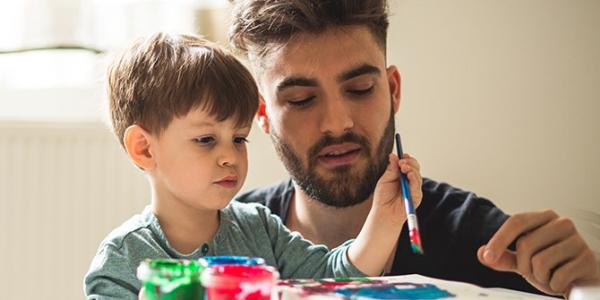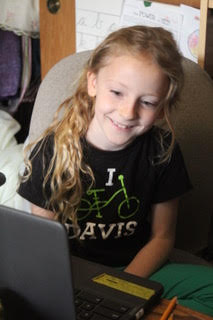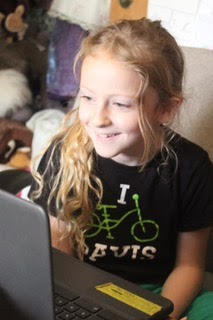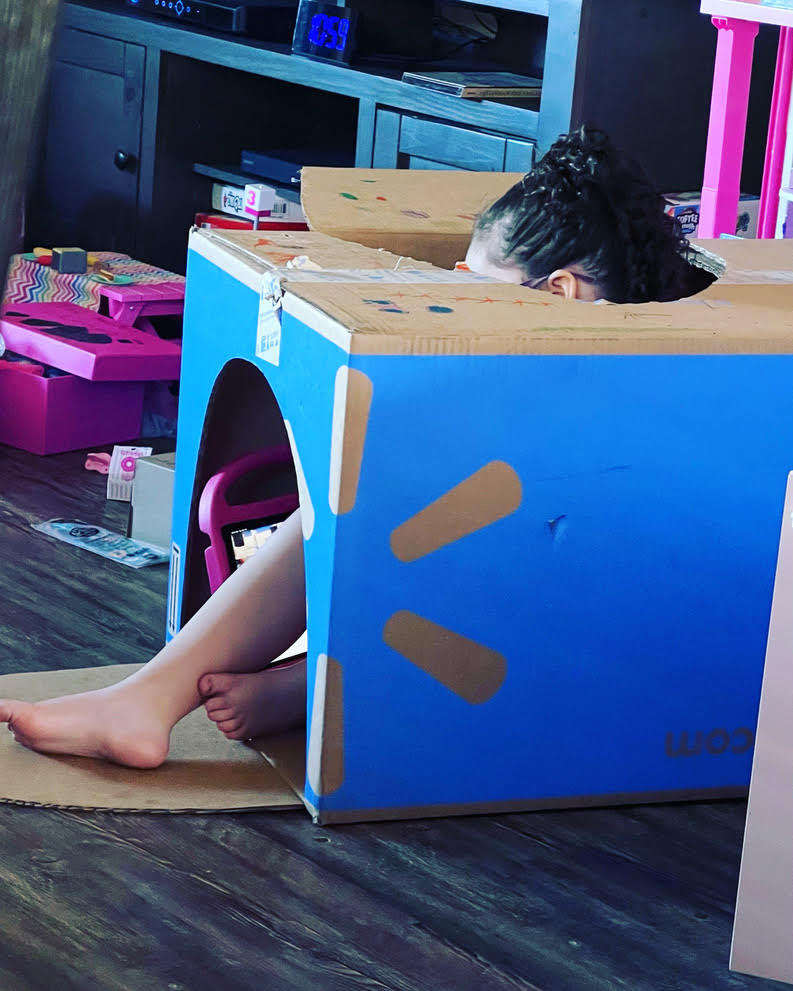Focus on DAP: Joyful Learning in a Tough Year

Note: This is the first in a series of blog posts that reflect on the recently released position statement on Developmentally Appropriate Practice
“Each and every child, birth through age 8, has the right to equitable learning opportunities—in centers, family child care homes, or schools—that fully support their optimal development and learning across all domains and content areas. Children are born eager to learn; they take delight exploring their world and making connections. The degree to which early learning programs support children’s delight and wonder in learning reflects the quality of that setting. Educators who engage in developmentally appropriate practice foster young children’s joyful learning and maximize the opportunities for each and every child to achieve their full potential.”
The recently released 4th edition of the Developmentally Appropriate Practice position statement emphasizes the importance of engaged joyful learning. But what does engaged joyful learning look like during a time when many child care centers around the country are struggling, and educators, families, and children are navigating virtual school and social distancing? As I pondered this question, I thought of two different photos that two different educators/moms snapped of their children during virtual school. To me, these represent joyful learning.
The first photo is of a 7-year-old second grader, who is smiling ear to ear while leading her class in a game of twenty questions. In this example, joyful learning is part of a carefully planned learning activity with a number of learning goals embedded in a fun, engaging game the children can play with each other virtually.
The second photo is of a cardboard “car” with a small glimpse of a 5-year-old kindergartener, who decided to attend virtual school from “inside her car.” The photo wonderfully captures the pride, joy, comfort, and agency a child experiences when engaged in self-directed play. While her work on transforming the box into a house and then a car took place outside of school, her mom and teacher allowed her the ownership and agency to decide to incorporate her creation into her virtual classroom. Although both examples represent different kinds of play, the first a game and the second self-directed, in both cases a picture is worth 1,000 words.
A second grader leads twenty questions!
Julia Luckenbill described the moment she captured during her daughter’s school day.
My second grader was in the midst of her virtual school day when she ran from her desk wearing an ear-to-ear grin. “My teacher says I can lead the twenty questions game! I always wanted to be the one who gets to answer the question!” She sorts through various toys, considering the kinds of objects her first-grade teacher used to stump the class last year. She selects a pirate eye patch and bags it. When it’s time to play, she holds up the bag, and they are off.
“Is it a toy?” 

“Kinda…”
“Is it a stuffie?”
“Noooo!”
Her teacher, Mrs. Davis, gives the class tips. “You can ask her things like, ‘Is it big or small?’”
“It’s small.”
The children successfully discover that the mystery item has elastic and is blue, but they end up stumped. Victorious, my second grader reveals the pirate eye patch and puts it on. Now many other children want to lead the game. It’s time for breakout rooms, and as my daughter clicks on the room she is assigned to, the students begin to chat.
“What shall we play?”
“Let’s do twenty questions!” Her friend runs off screen, hunting for his own mystery item. The children’s learning is self-directed, engaged, and joyful.
This moment, captured in a photo, represents joyful learning because to the children, twenty questions looked and felt like play. As they played, the teacher was able to use the moment to achieve a number of learning goals:
- Children refined on-task behaviors such as following directions and raising hands.
- They developed listening skills which they used to process information from clue givers.
- They developed and used descriptive language to give clues and ask questions.
- They used cognitive skills as they activated prior knowledge and made logical predictions based on the clues gathered.
- They used previous experiences to communicate clearly with their peers and teacher.
Refining their communication skills using all these tools will help them to participate effectively in small and large group discussions, not only during this game, but in other activities.
I love that the activity leads to home-to-school connections in our household because, of course, we must play the same game again. Repetition in a range of settings made her be able to use these skills easily and confidently.
I know that my daughter still misses seeing her friends at school and being in the physical classroom. But her teacher infuses the virtual classroom with enthusiasm and love, and it showed in this moment and every day since then. She gives the children the tools they need to make it through the pandemic: humor, interaction and communication, play, and a bit of suspense too.
It’s not the same, but this virtual classroom is building community and resilience through joyous engaged interactions.
A kindergartener attends virtual class from her “car”
Nicol Russell describes the moment she captured during her 5-year old daughter’s school day.
Here’s my 5-year-old attending virtual school from her “car” on her first day back in virtual class after five weeks of attending kindergarten in person.
A few days before this picture was taken, my daughter turned the box into a house. She became frustrated that the house was too small for her (she's a tall 5-year old), so she asked for help cutting a hole in the top. I thought it was for a roof for her house, but she said, "No, it's a car now, with the top that opens."
On the day the picture was taken, she simply announced that she would be working in her car for school. I'm actually not sure what her teacher may have seen or thought. In general, I try to let her be as independent as possible while she is doing her schooling, so unless she needs assistance, I don't interact with her teacher while she's online.
To me, this represents joyful learning because she was able to be as comfortable as she wanted to be while attending virtual class in a structure she conceived of and created herself. I don't know what could be more joyful than enjoying the fruit of one's labor!
Editor’s note
In both these examples, there is a great deal of trust between parent and teacher, parent and child, teacher and child. In the case of twenty questions, children leave their virtual classroom to run and find objects around the house. The teacher also trusted one child to lead an activity rather than having every activity led by the teacher. In the second example, the family and teacher work as a team to support a child in feeling some control as she engaged in her virtual classroom.
Both her family and teacher considered how to invite her to express her unique ideas in the space, and they allow her to make decisions about how she will be most comfortable and engaged, thinking outside (or inside) of the box.
When teachers and families work together, the virtual classroom is enriched by the things families bring to the screen, whether it be creative ways to view the lesson, peering at pirate eyepatches, or something else entirely – favorite decorations, beloved books, pets… Letting the children bring their stories into the virtual classroom brings joy.
These learners are lucky to have teachers that understand that children need to individualize their experience in order to feel control during a challenging time.
You may ask: Is sitting in a box developmentally appropriate while attending virtual school? Would twenty questions be developmentally appropriate with younger children? As the position statement points out, nothing is developmentally appropriate in and of itself. Educators make curriculum decisions that support the children they are engaging. To do this they consider many things -- family backgrounds and cultures, families’ lived experiences, which things can’t be translated to a digital world and which can still be a part of the curriculum, as well as the children’s ages. Teachers must integrate their district’s curriculum expectations using their own unique style. No wonder each classroom will look unique, and each may inspire joyful learning in their own way.
As we enter a new year, we want to thank all the educators who’ve shared their stories and ideas this past year in NAEYC’s publications Young Children and Teaching Young Children, on the blog, and in NAEYC’s online community HELLO. As we move into 2021, we will be working toward offering a range of resources to support educators as they continue to strive to implement DAP and create joyful engaged learning experiences.
 We are looking for more educators to share their stories about joyful learning experiences that reflect DAP to include on our blog and in our publications. If you have a story about an engaged, joyful learning experience to share, please submit your idea to the NAEYC blog or to TYC with the heading “Engaged Learning and DAP” for our consideration.
We are looking for more educators to share their stories about joyful learning experiences that reflect DAP to include on our blog and in our publications. If you have a story about an engaged, joyful learning experience to share, please submit your idea to the NAEYC blog or to TYC with the heading “Engaged Learning and DAP” for our consideration.
Susan Friedman is Senior Director, Publishing and Professional Learning at NAEYC.
Julia Luckenbill is the director of Davis Parent Nursery School’s Danbury site and an adult educator with the Davis Joint Unified School District. She is retired from her work as a full-time lecturer and program coordinator at the Center for Child and Family Studies Laboratory School and is enjoying afternoons with her daughter.
Nicol Russell is the vice president of Implementation Research for Teaching Strategies, LLC. She is also currently serving as a NAEYC board member.
